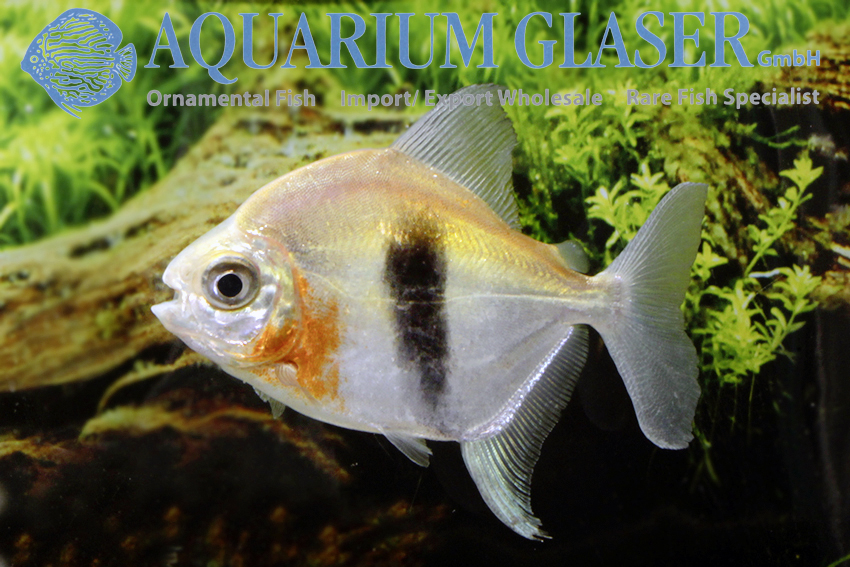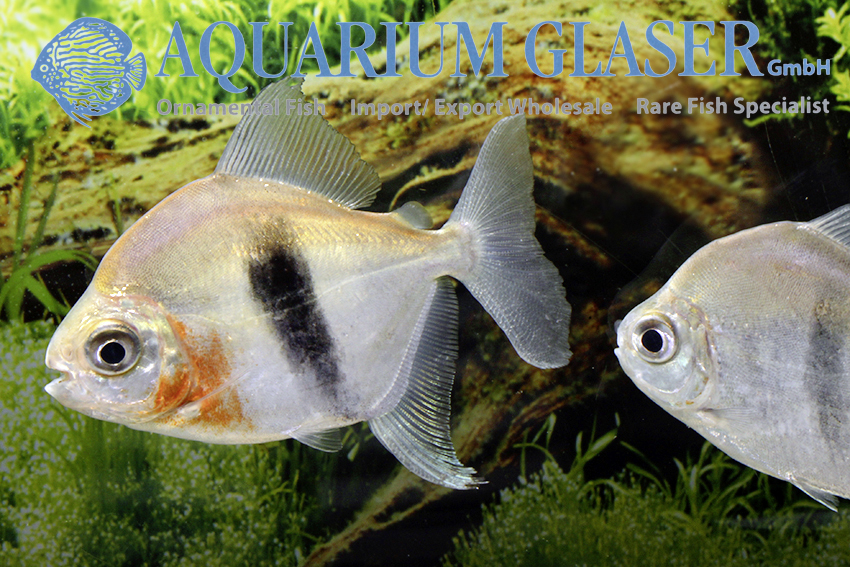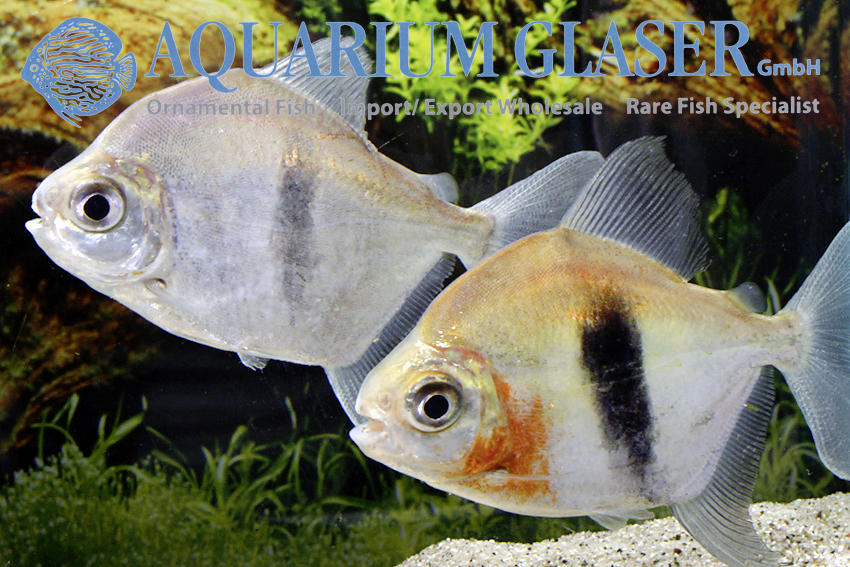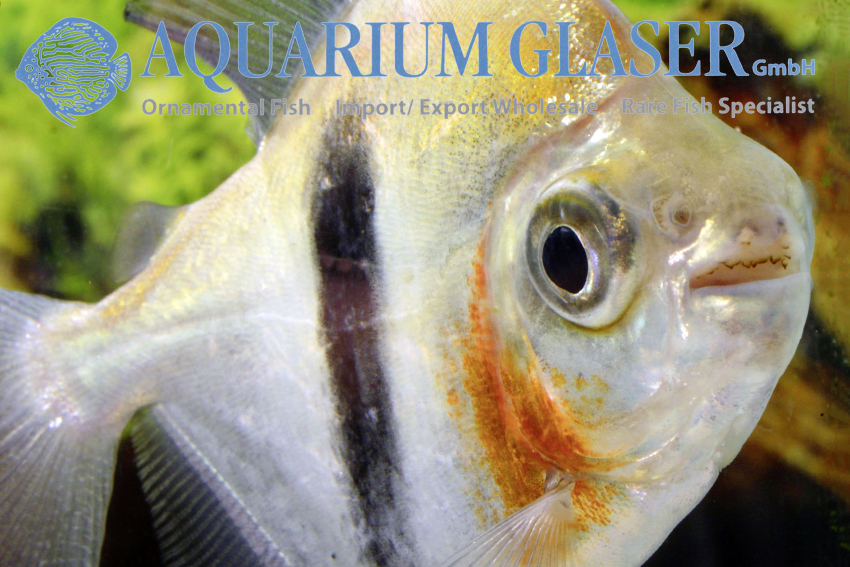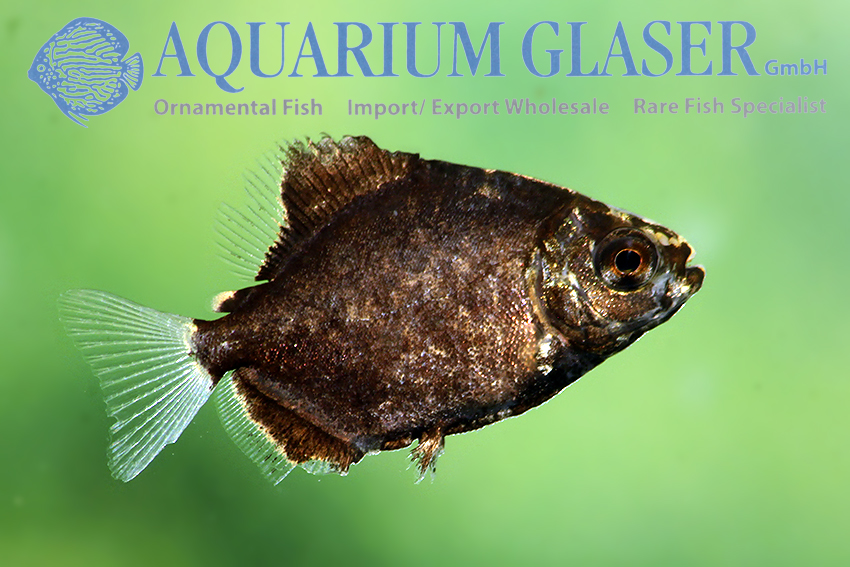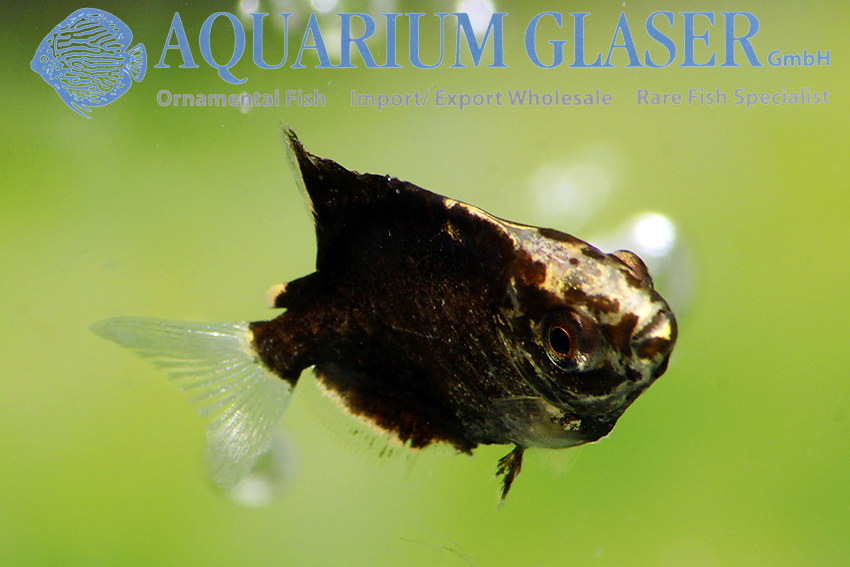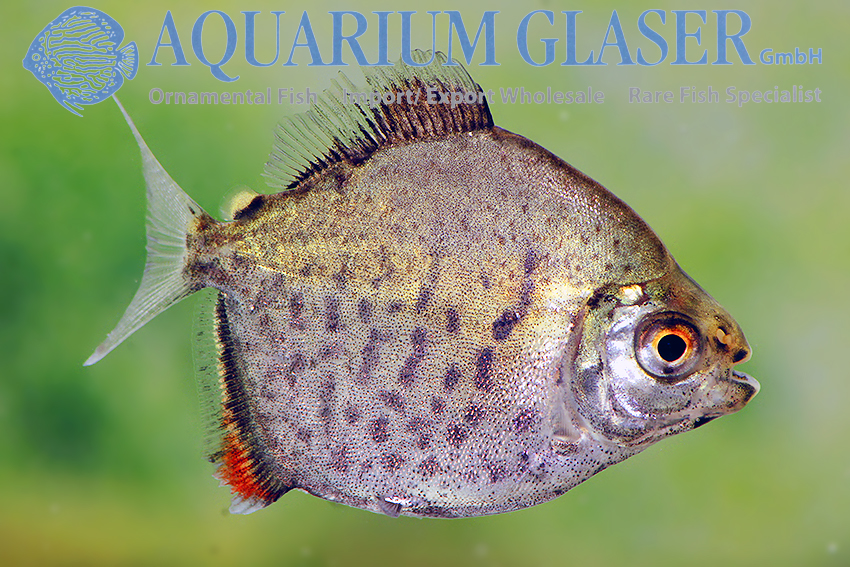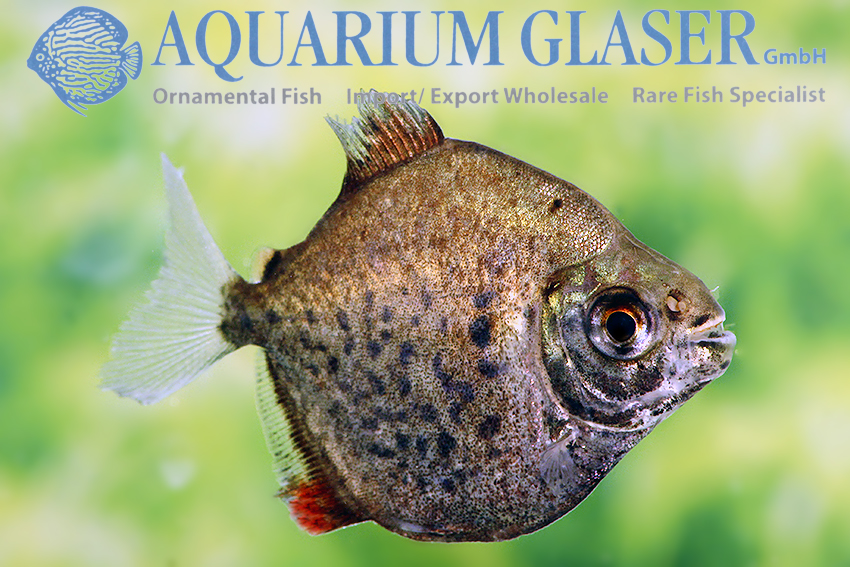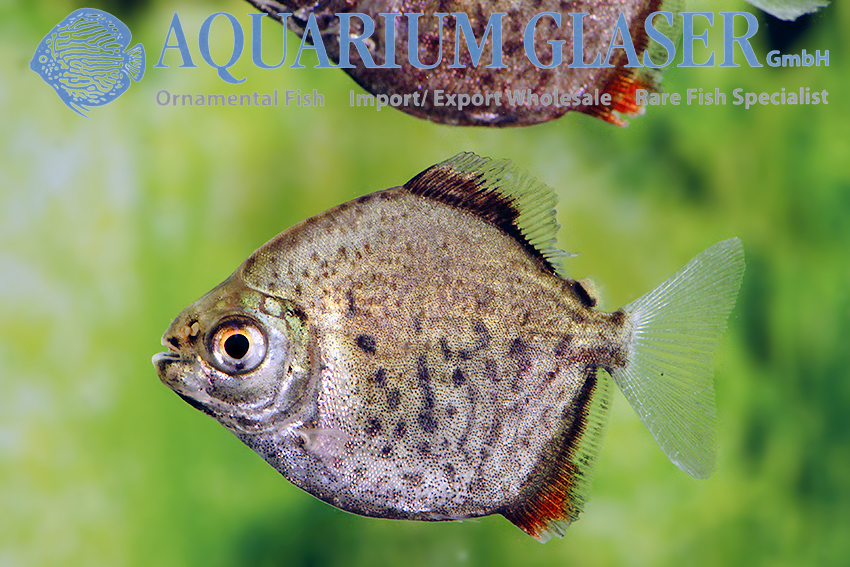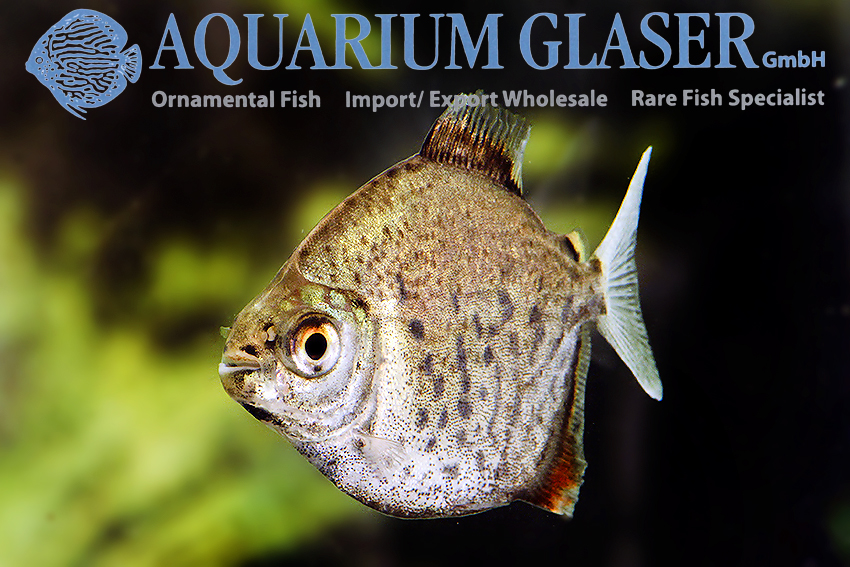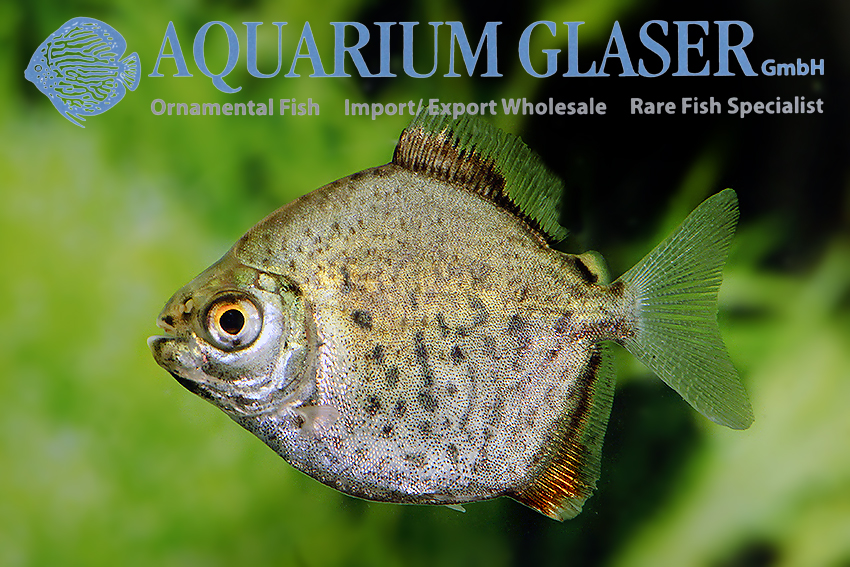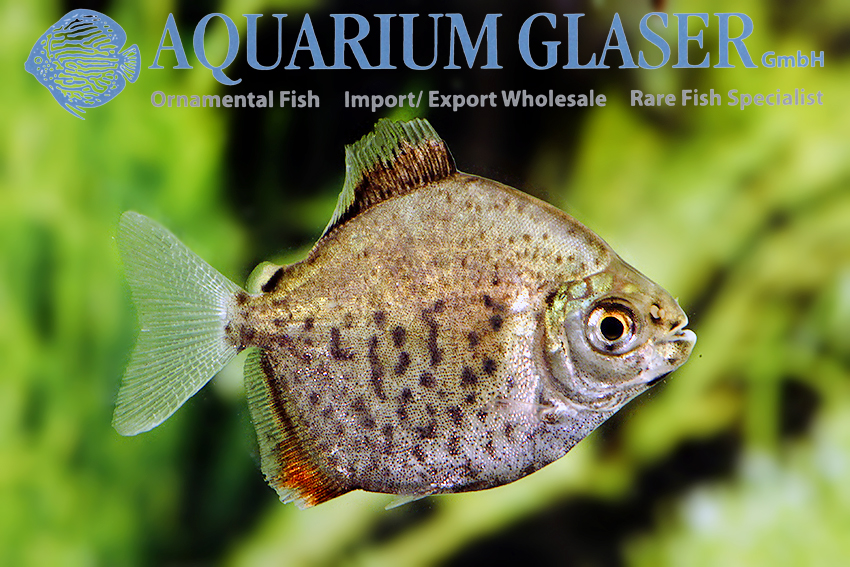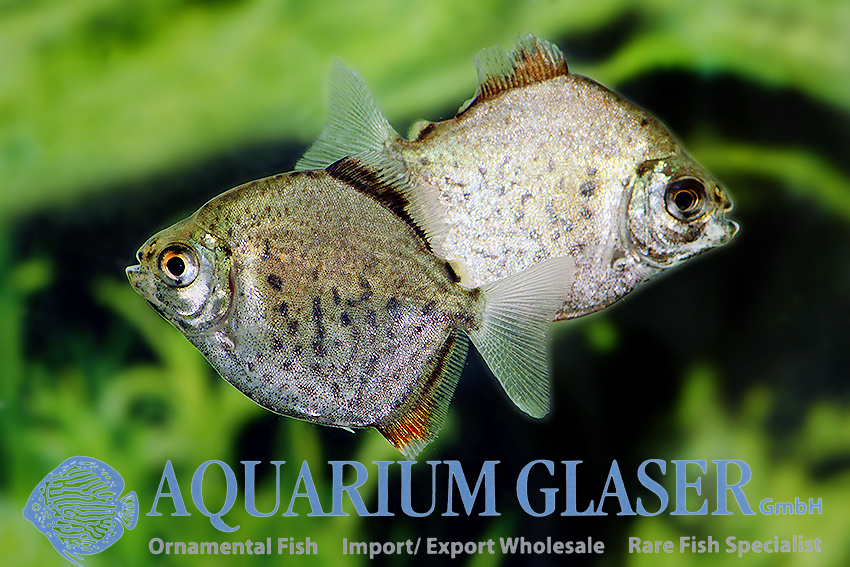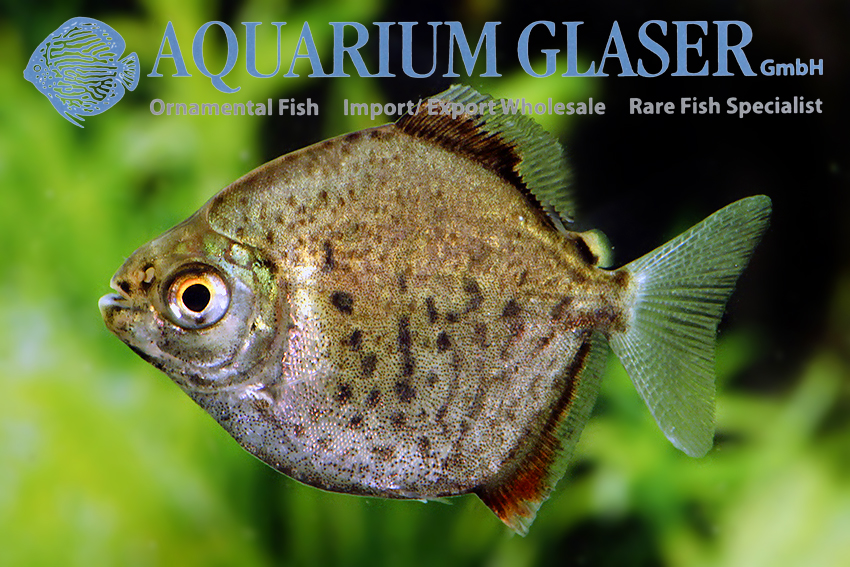UPDATE: This species was scientifically described as Myloplus aylan in 2024 and separated from M. schomburgkii.
Obviously many different varieties – or do they even represent different species, who knows? – of the attractive pacu Myloplus (formerly: Myleus) schomburgkii exist. We obtained recently very nice specimens from Colombia, which are characterized by the very broad black band over the body. Our fish are 9-12 cm long and only subadults; Myloplus schomburgkii attains a maximum size of more than 40 cm.
For our customers: the fish have code 270514 on our stocklist. Please note that we exclusively supply the wholesale trade. Available in limited numbers only.
Text & photos: Frank Schäfer





